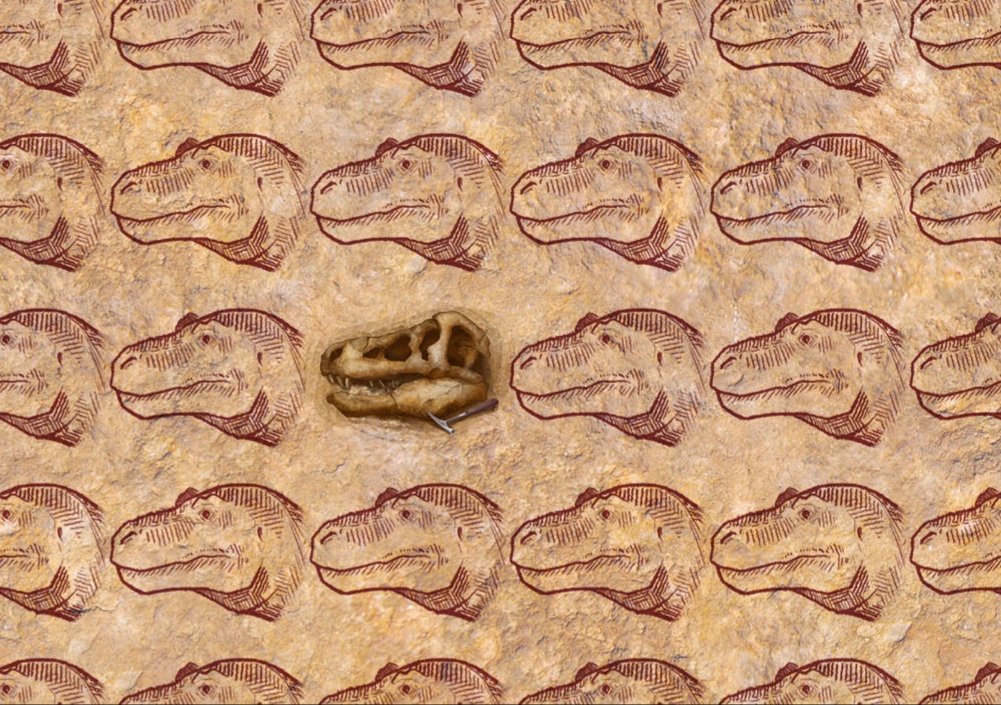
How to count T. Rex -
A 🧵Thread in Cartoons
Happy #FossilFriday ! You may have seen our recent paper where we calculate that 2.5 billion T. Rex ever lived.
But how do we know? 1/11
A 🧵Thread in Cartoons
Happy #FossilFriday ! You may have seen our recent paper where we calculate that 2.5 billion T. Rex ever lived.
But how do we know? 1/11

First:
The art in this thread is by Sara Volz, a biophysicist at UC Berkeley!
The lead art of T. rex heads is by @franzanth - follow for great #paleoart, especially of inverts.
In case you missed the paper here it is: science.sciencemag.org/content/372/65…
2/11
The art in this thread is by Sara Volz, a biophysicist at UC Berkeley!
The lead art of T. rex heads is by @franzanth - follow for great #paleoart, especially of inverts.
In case you missed the paper here it is: science.sciencemag.org/content/372/65…
2/11
So how to get biology out of the ground?
We started with the amazing existing work on T. rex
None of this work is possible without research by colleagues like @dustydino Greg Erickson @histo_holly
@TyrannosaurCarr
@AAlechiarenza @cullen_thomas
@SteveBrusatte @df9465
and more
3/11
We started with the amazing existing work on T. rex
None of this work is possible without research by colleagues like @dustydino Greg Erickson @histo_holly
@TyrannosaurCarr
@AAlechiarenza @cullen_thomas
@SteveBrusatte @df9465
and more
3/11

With their work we could get a range of body masses, estimate sexual maturity, and model survivorship.
Histology was an especially powerful tool. 4/11
Histology was an especially powerful tool. 4/11

These sort of "biographical details" let us calculate the length of generations, a sort of T. rex turnover rate. 5/11 

Our secret weapon was from ecology - Damuth's Law.
Simply put, the relationship between size and population density. The same square mile can support more bunnies than elephants.
This helped us get from body mass to population density. 6/11
Simply put, the relationship between size and population density. The same square mile can support more bunnies than elephants.
This helped us get from body mass to population density. 6/11

How many T. rex lived at once?
20,000 - which we get from the population density times the species area.
@KMagoulick mapped out Cretaceous North America! 7/11
20,000 - which we get from the population density times the species area.
@KMagoulick mapped out Cretaceous North America! 7/11

Almost there!!
We know the generation time, and how many adults in one generation, but how *many* generations? 8/11
We know the generation time, and how many adults in one generation, but how *many* generations? 8/11

We had to know how long the species lasted - so we used the geology to bracket the length of time T. rex was around - about 2.4 million years.
@TannerPaleo and @josh_zimmt worked this out. 9/11
@TannerPaleo and @josh_zimmt worked this out. 9/11

Multiply the standing crop of T. rex and the number of generations - and there you go, the number that ever lived.
So that's how you count 2.5 billion T. rex!
10/11
So that's how you count 2.5 billion T. rex!
10/11

Lastly, it's important that our answers came with big uncertainties.
Here's Damuth's Law again - oddly source of a lot of error. But that's great because we can learn more from living animals!
Connor Wilson and @danielvlatorre helped lead author Charles Marshall code all this.
Here's Damuth's Law again - oddly source of a lot of error. But that's great because we can learn more from living animals!
Connor Wilson and @danielvlatorre helped lead author Charles Marshall code all this.

• • •
Missing some Tweet in this thread? You can try to
force a refresh


